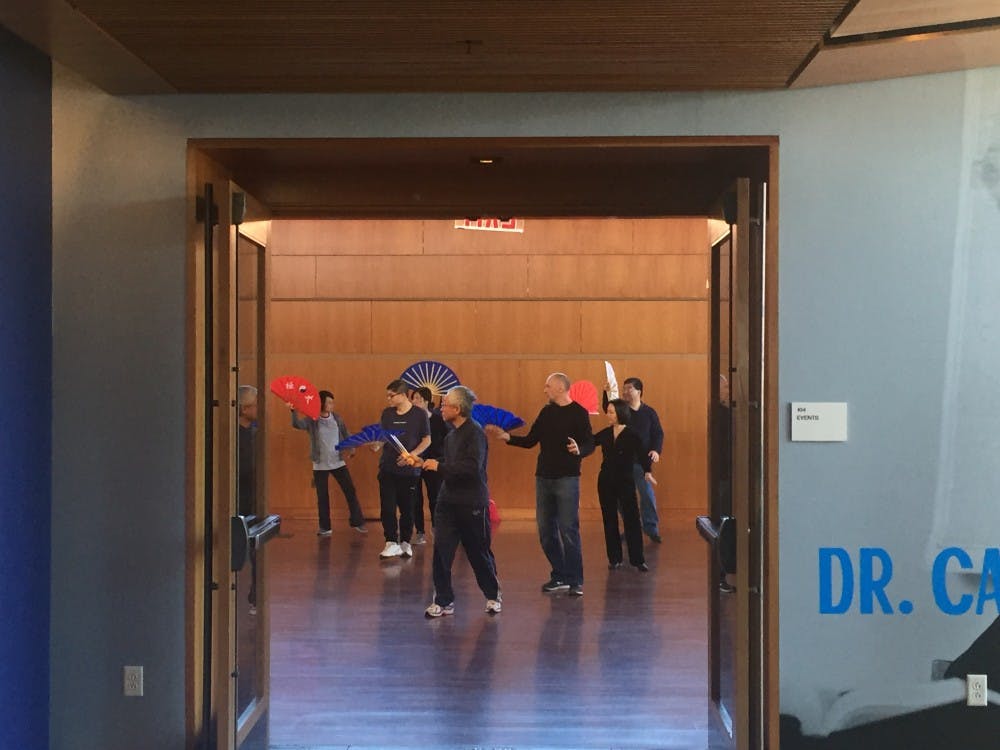Every Sunday morning, in the quiet back room of the Carl A. Fields Center for Equality and Cultural Understanding, Wonchull Park teaches a community tai chi class. I arrived a couple minutes early, but about 15 older members were already there, conversing in the back of the room. Park allowed me to observe from the sideline and quietly take notes. Beginning with several minutes of seated meditation, the class focuses on breathing slowly and rubbing muscles gently to warm up. Eventually, Park stands up and starts leading the class through circular motions of his hands in coordination with his body. He then begins to speak.
Park is a longtime physicist at the Princeton Plasma Physics Laboratory and a longer-time practitioner of tai chi. Learning from masters of ancient lineage, Park’s pedigree contributes to his enduring relationships with his learners. Feng Chen, a professor at Rider University who learned tai chi when she was a college student in China, recognized Park’s style as one passed down from one generation to another. Park also teaches tai chi with a “unique approach,” Chen said.
Park emphasizes comfort and the effects of relaxation while seeking to demystify the martial art. Approaching tai chi with his physics background, Park decouples the esoterica from the profoundly simple truths of tai chi.
To some, said his assistant, Mackenzie Hawkins ’15, this may be “a little too simple.” She humorously posed the question: “How far can you go with Newton’s three laws?” But Park asserts that it really is that simple, and points to tai chi’s application in everyday life.
The effects of tai chi are noticeable and immediate, but can take a lifetime to perfect. During class, Park explained the concept of qigong, what he describes, in part, as “understanding the reality of now.”
Hawkins helped unpack it for me: “In the narrow sense, qigong is a breathing-related exercise,” but in a “broad sense” it is “mind-body cultivation.” Understanding the natural cycles of breathing centers one’s emotions and attunes one’s conscious mind to the “whole positive feedback cycle” of being and perceiving.
Fundamentally, “breathing is a movement,” according to Park, and like any motion, most of us should work on our form. Park pointed out that I held my breath as I typed and that I had several issues with my posture. These are details we are prone to ignore in daily life. Breathing sharpens the mind, which is good for school work or advanced physics, Park noted. Hawkins attests to the recuperative powers of tai chi from her personal experience: As an undergraduate, she struggled with illness and found recovery in the practice of meditation.
Hawkins and Park have begun working together to publish books and teach more classes to introduce tai chi to a younger generation. Together they teach classes for kids at the Princeton YMCA, called “Super Kid Tai Chi,” and their books in progress will demonstrate different benefits of tai chi in the modern life.
On Saturdays from 3 to 4:30 p.m., Park teaches club tai chi in the studio of the New South Building, free to all students and faculty. In contrast to the Sunday classes, these offer smaller, more direct learning with Park. In a moment of humor, Park encouraged all to take up this lifelong practice: “like the Nike commercial, just do it!”









